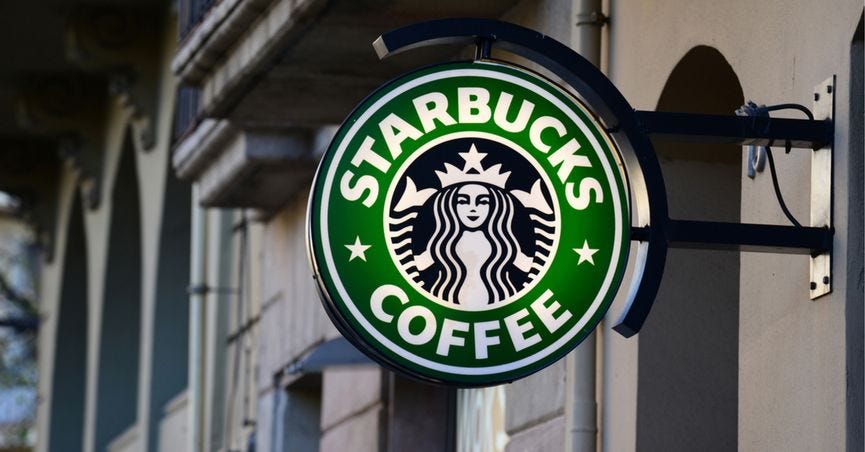The SEIU Claims Starbucks 'Illegally' Fired 7 Employee-Organizers, But Did It Really?
Allegations of a company's unlawful activity are often part the union playbook.
QUICK FACTS:
Starbucks terminated seven employee activists in the middle of a union campaign in Memphis, Tennessee
The union—SEIU’s Starbucks Workers United—claims the firings are illegal and due to the employees’ union activity
In an unusual move, the company claims the firings were for legitimate reasons—even going so far as to list the reasons
Ultimately, the NLRB will decide
DETAILS
MEMPHIS, TN—In the midst of an estimated 50 union campaigns among its 9,000 U.S. stores, Starbucks has been accused of ‘illegally’ firing seven employee activists employed at one store in Memphis.
According to Bloomberg’s Josh Eidelson, the union filed charges with the National Labor Relations Board (NLRB) on Tuesday alleging the firings were in retaliation for the employee activists’ speaking with the media.
The union, an affiliate of the Service Employees International Union, called for a federal court injunction “to prevent irreparable destruction of employee rights” resulting from the firings.


Longtime union organizer and former AFL-CIO organizing director Richard Bensinger—who is working for the SEIU’s Starbucks Workers United—tweeted that the employee activists were fired for speaking with reporters.
“Starbucks has fired the entire Memphis organizing committee for talking to local tv reporters in their store! These workers launched their campaign on MLK Day to honor his legacy! The corporation’s assault on civil rights and worker rights will not prevail!”


An Unusual Move.
However, in an unusual move for a company during any employee dispute, Starbucks responded publicly to the allegations even going so far as stating why the employees were fired.
via Bloomberg:
Starbucks spokesperson Reggie Borges said the employees were not punished for their involvement with the union or for talking to the media, but rather because they violated numerous safety rules by letting off-duty staff and non-employees including reporters into their store when it was closed. They also let non-employees access employee-only areas of the store, opened a safe, and left the front door unlocked, he said.
Ultimately, the National Labor Relations Board will decide whether or not Starbucks acted unlawfully.
Analysis
Even when the National Labor Relations Board is controlled by Republicans, terminating employees for union activity during a union organizing campaign is typically considered a “hallmark violation” that destroys “laboratory conditions” and could garner a bargaining order.
Under a Democrat-controlled NLRB, if a company were to fire employees for union activity, it would almost certainly garner a bargaining order—especially as the current NLRB General Counsel has very publicly stated her intent to more vigorously pursue remedies such as bargaining orders.
Given the fact that the company has “at least 30” attorneys working on its behalf, according to HuffPost labor writer Dave Jamieson, it would be very hard to believe the company acted without the advice of counsel.
Consistent Enforcement, Past Practices & Proof
“Such cases often come down to how vigorously the company has enforced the policies it cited for the terminations — that is, whether other workers have been fired for opening the store outside of shift hours, or for letting nonemployees into the store without manager approval,” notes HuffPost’s Jamieson. “If those policies aren’t typically enforced, the union would likely argue that the firings were done out of anti-union animus.”
In addition to the past practices and consistent enforcement of policies that Jamieson notes, another consideration is whether there is proof (or evidence) that the employee activists did what they are accused of doing.
As most Starbucks customers know—except, perhaps, those who only utilize Starbucks for their restrooms—most Starbucks stores have multiple cameras throughout their stores.
The fact that a Starbucks spokesman stated, with specificity, that employees “violated numerous safety rules by letting off-duty staff and non-employees including reporters into their store when it was closed.” and that “[t]hey also let non-employees access employee-only areas of the store, opened a safe, and left the front door unlocked” indicates that the company has more than just hearsay.
It may may video proof—which means the union’s case may, ultimately, rest on whether the company consistently enforced its policies in the past, as Jamieson notes.
Given the high profile nature of the SEIU’s campaign at Starbucks and, as well, the aggressiveness of NLRB General Counsel Abruzzo to pursue cases involving terminations quickly, it may not take long before we know whether the union’s claim that Starbucks fired the seven employee activists are true…or not.




